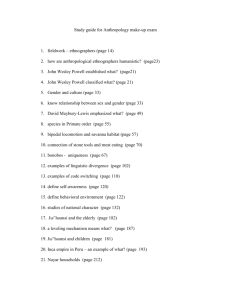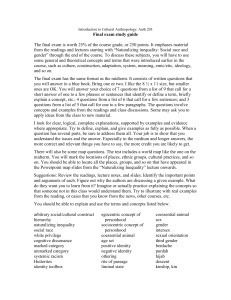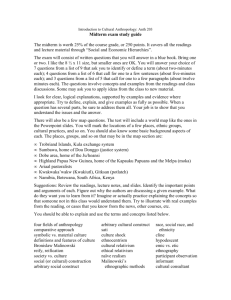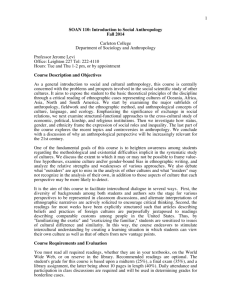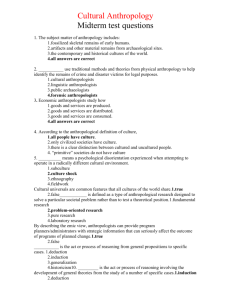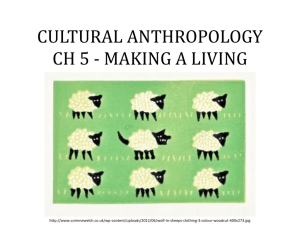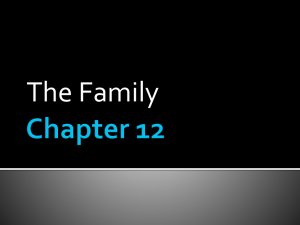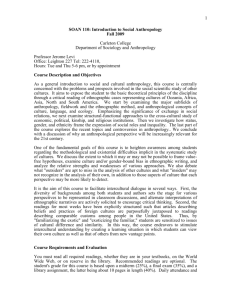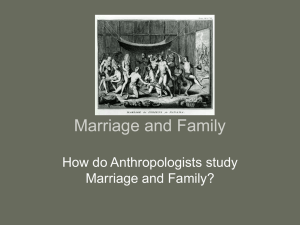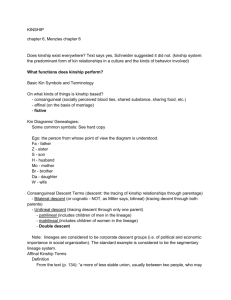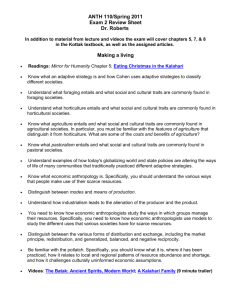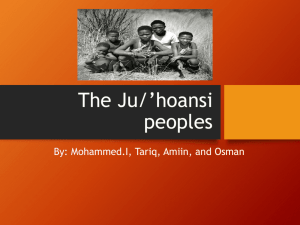ANTH 380/Traditional Cultures Midterm Review Sheet Fall 2009
advertisement
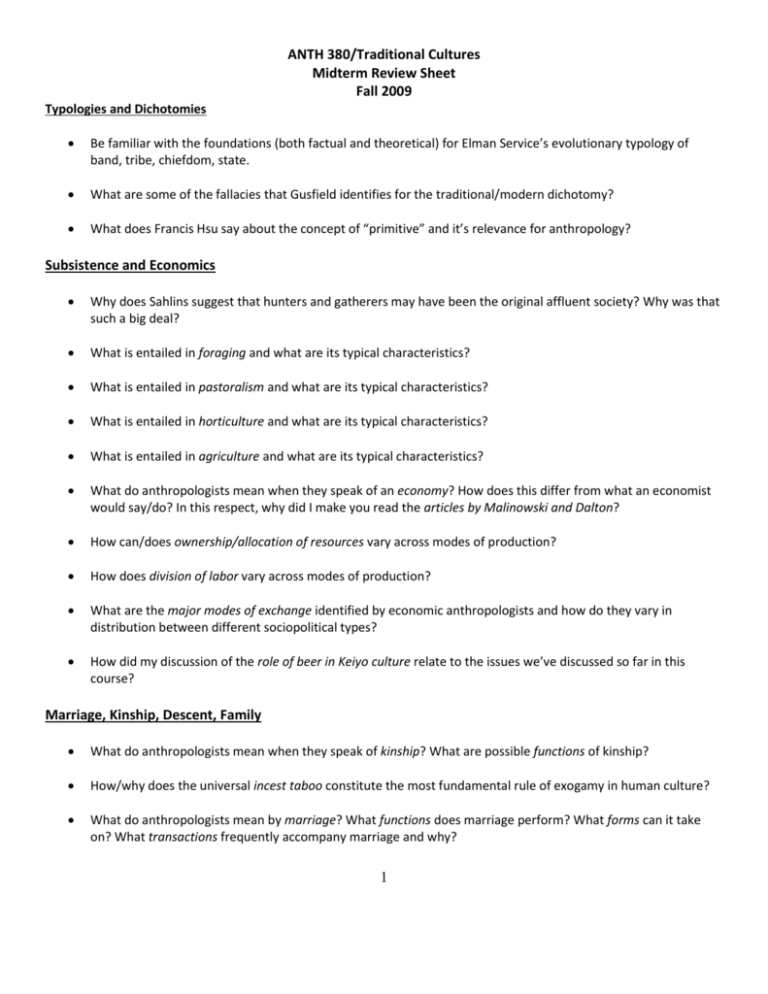
ANTH 380/Traditional Cultures Midterm Review Sheet Fall 2009 Typologies and Dichotomies Be familiar with the foundations (both factual and theoretical) for Elman Service’s evolutionary typology of band, tribe, chiefdom, state. What are some of the fallacies that Gusfield identifies for the traditional/modern dichotomy? What does Francis Hsu say about the concept of “primitive” and it’s relevance for anthropology? Subsistence and Economics Why does Sahlins suggest that hunters and gatherers may have been the original affluent society? Why was that such a big deal? What is entailed in foraging and what are its typical characteristics? What is entailed in pastoralism and what are its typical characteristics? What is entailed in horticulture and what are its typical characteristics? What is entailed in agriculture and what are its typical characteristics? What do anthropologists mean when they speak of an economy? How does this differ from what an economist would say/do? In this respect, why did I make you read the articles by Malinowski and Dalton? How can/does ownership/allocation of resources vary across modes of production? How does division of labor vary across modes of production? What are the major modes of exchange identified by economic anthropologists and how do they vary in distribution between different sociopolitical types? How did my discussion of the role of beer in Keiyo culture relate to the issues we’ve discussed so far in this course? Marriage, Kinship, Descent, Family What do anthropologists mean when they speak of kinship? What are possible functions of kinship? How/why does the universal incest taboo constitute the most fundamental rule of exogamy in human culture? What do anthropologists mean by marriage? What functions does marriage perform? What forms can it take on? What transactions frequently accompany marriage and why? 1 Why is monogamy the norm even in those 80% of human societies which permit men to have multiple wives? What kinds of different types of kin have been identified by anthropologists? Why is kinship so important in traditional societies/cultures? What is descent and what are the primary ways of tracing it? What functions do descent principles perform? What types of descent groups exist in traditional societies? What distinguishes nuclear from extended families and what types of circumstances tend to favor each type? How does Jeffery Paige differentiate between “factional” and “communal” polities (= types of political systems)? What relationships does he claim to find between the variables rules of descent/residence and type of polity? Gender What differentiates sex from gender? What does it mean to say that humans are a sexually dimorphic species? What types of general patterns exist cross-culturally in the gendered division of labor and what types of explanations have been offered for these recurring patterns? Why is it particularly important to examine gender in foraging/hunting and gathering societies and what types of patterns have been found? What types of factors can affect gender stratification? What does Scott Coltrane assert in “The Micro-politics of Gender in Nonindustrial Societies” regarding male displays of strength and aggression? How do his claims match up with those of Ernestine Friedl in “Society and Sex Roles”? The Dobe Ju/’hoansi What are the salient features of the Dobe environment and how do the Ju/’hoansi adapt to them? Understand the basics of Ju/’hoansi social organization, including the 3 types of kinship that Lee identifies. How do Ju/’hoansi deal with aging in their society? How/why is this changing? What is complaint discourse? How do the Ju/’hoansi deal with conflict and what is the role of hxaro in this process? How do Ju/’hoansi conceive of the supernatural in their world view? Who are the //gangwasi and what is n/um? Who are the neighbors of the Ju/’hoansi and how have their relations to these people changed over time? What kinds of changes have been occurring since Richard Lee began his research in the Dobe area in the 1960s? How are the Ju/’hoansi dealing with these factors? 2
